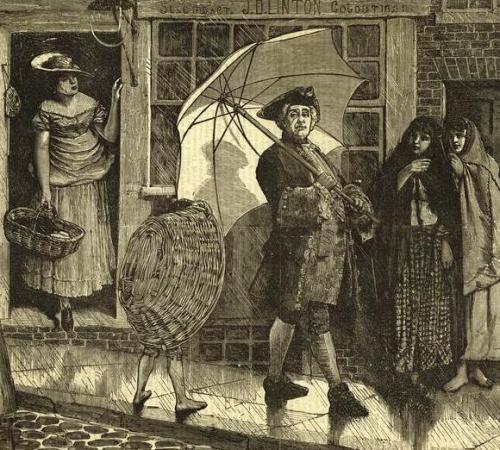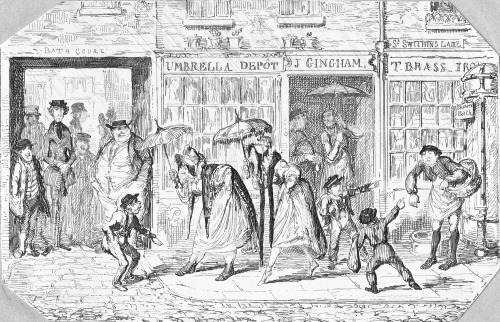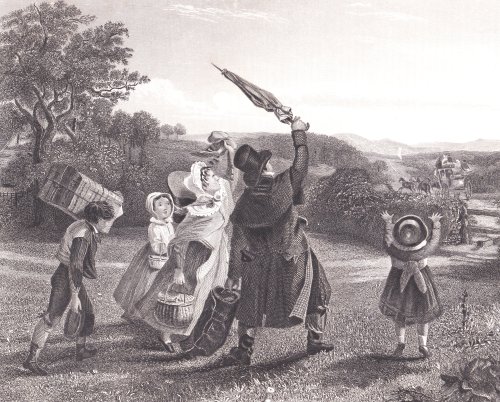Some time ago I bought a charming book for children which unfortunately is missing its title page and front matter. I tracked it down from the introductory poem and found that it is a version of Rural Scenes; or, A Peep Into the Country for Good Children, originally published in 1805 by Harvey, Darton & Company, Gracechurch Street, London. The authors were sisters Jane and Ann Taylor. Jane was the author of ‘Twinkle, Twinkle, Little Star.’

The only one I can find on sale is a first edition bound with the companion A Peep Into London… and that was $3,250! Mine has different and fewer images, although in exactly the same style, and was published in 1813. I think I paid £10 for it – but I have to admit, mine is rather more battered.
With the rain lashing down outside I thought the text accompanying a scene of a woman dipping water from a stream was rather apt. The book groups similar subjects together and this is from a set all to do with water.

38: Dipping Water.
Morning and night, with cleanly pails,
Comes Mary to the spring,
And to her cottage never fails
The Cooling draught to bring.
With some she scours the dressers smart,
or mops the kitchen bricks; And in the kettle sings a part,
Above the crackling sticks.
The text following it reads, ‘Without water, man, woman, and child; birds, beasts, and fishes; trees, plants, and flowers, must all die! Do not let us be so angry, then, with a shower of rain, even if it should spoil our walk; for what should we do without it? We often overlook the comforts we possess, nor are we sensible of their great value, until we are deprived of them. For want of water and fresh air, many English people died in a dungeon, at Calcutta, in the East Indies. And how much to be valued is fresh water on shipboard; as all water in the sea is salt, and not fit for men to drink, except as a medicine, in some disorders, for people on shore.’
In a very few lines it packs in a lecture on housekeeping – clean pails required, daily scrubbing of the kitchen – a passing reference to history with the Black Hole of Calcutta, moralising on being aware of the blessings we possess and a mention of saline draughts in medicine!
The image above is a lecture on the value of the cows which John is taking to drink. Betty will make cheese, butter and cream and sells the butter milk ‘to the poor people’. But when the cows are killed they provide food, leather, fat for candles, hoofs for glue, horns to make lanterns and combs, bones for carving like ivory, ‘the blood makes a beautiful blue colour’ and ‘even the bowels are not thrown away.’ Luckily we aren’t informed what happens to those. No sentimentality about farm animals here!
As for the bottom image, that provides us with a neat little moral lesson:

Jane Taylor, shown below, lived 1783 – 1824. She was born in London, lived for much of her childhood in Lavenham and died and is buried at Ongar in Essex. 
I may well return to this delightful book in the future – I’m eager to share the ingenious ‘Fish Machine’.













